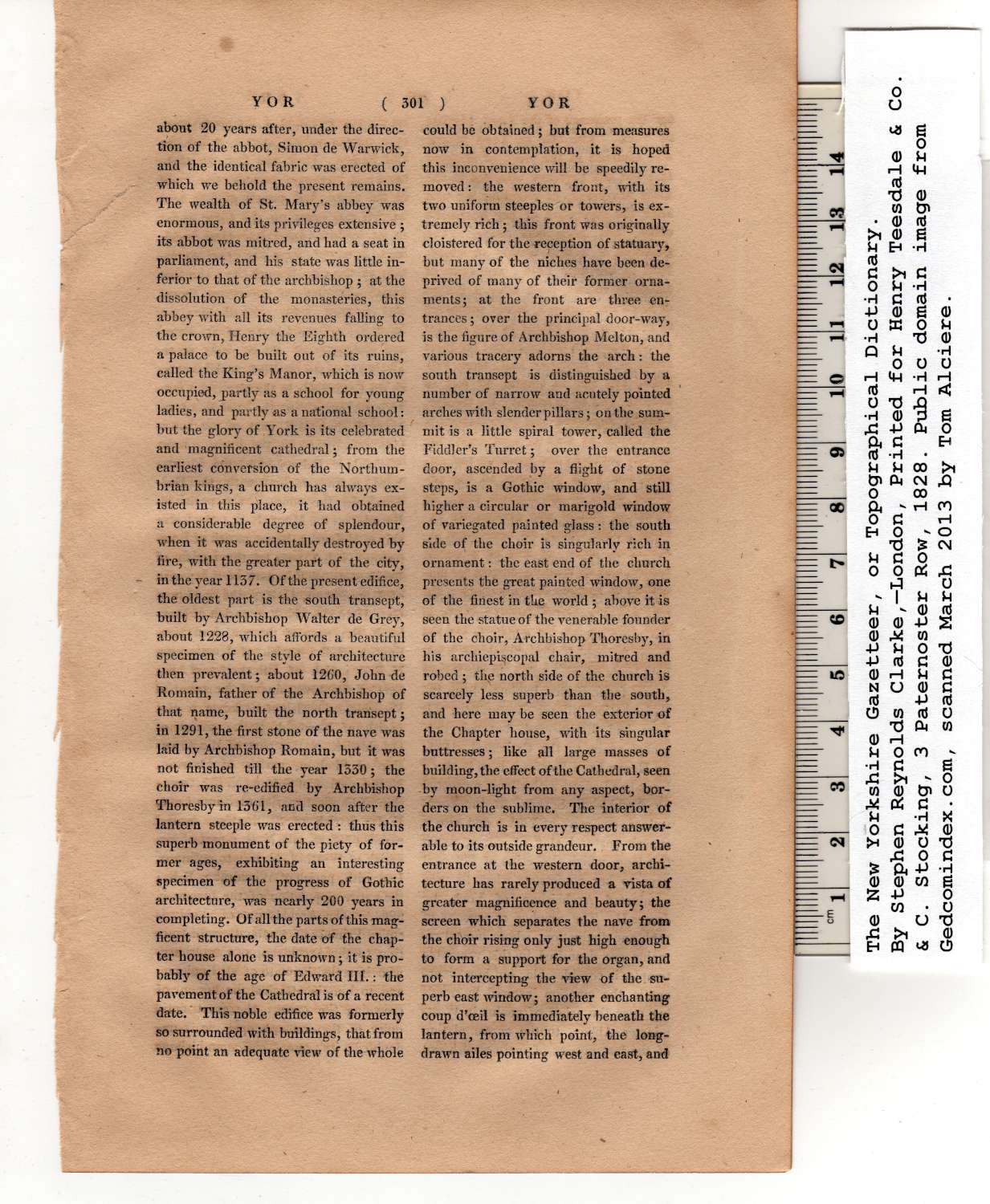|
about 20 years after, under the direc-
tion of the abbot, Simon de Warwick,
and the identical fabric was erected of
which we behold the present remains.
The wealth of St. Mary’s abbey was
enormous, and its privileges extensive ;
its abbot was mitred, and had a seat in
parliament, and his state was little in-
ferior to that of the archbishop ; at the
dissolution of the monasteries, this
abbey with all its revenues falling to
the crown, Henry the Eighth ordered
a palace to be built out of its ruins,
called the King’s Manor, which is now
occupied, partly as a school for young
ladies, and partly as a national school:
hut the glory of York is its celebrated
and magnificent cathedral; from the
earliest conversion of the Northum-
brian kings, a church has always ex-
isted in this place, it had obtained
a considerable degree of splendour,
when it was accidentally destroyed by
fire, with the greater part of the city,
in the year 1137. Of the present edifice,
the oldest part is the south transept,
built by Archbishop Walter de Grey,
about 1228, which affords a beautiful
specimen of the style of architecture
then prevalent; about 1260, John de
Romain, father of the Archbishop of
that name, built the north transept;
in 1291, the first stone of the nave was
laid by Archbishop Romain, but it was
not finished till the year 1330; the
choir was re-edified by Archbishop
Thoresbyin 1361, and soon after the
lantern steeple was erected : thus this
superb monument of the piety of for-
mer ages, exhibiting an interesting
specimen of the progress of Gothic
architecture, was nearly 200 years in
completing. Of all the parts of this mag-
ficent structure, the date of the chap-
ter house alone is unknown; it is pro-
bably of the age of Edward III.: the
pavement of the Cathedral is of a recent
date. This noble edifice was formerly
so surrounded with buildings, that from
no point an adequate view of the whole
could be obtained; but from measures
now in contemplation, it is hoped
this inconvenience will be speedily re-
moved: the western front, with its
two uniform steeples or towers, is ex-
tremely rich; this front was originally
cloistered for the reception of statuary,
but many of the niches have been de-
prived of many of their former orna-
ments; at the front are three en-
trances ; over the principal door-way,
is the figure of Archbishop Melton, and
various tracery adorns the arch: the
south transept is distinguished by a
number of narrow and acutely pointed
arches with slender pillars; on the sum-
mit is a little spiral tower, called the
Fiddler’s Turret; over the entrance
door, ascended by a flight of stone
steps, is a Gothic window, and still
higher a circular or marigold window
of variegated painted glass: the south
side of the choir is singularly rich in
ornament: the east end of the church
presents the great painted window, one
of the finest in the world ; above it is
seen the statue of the venerable founder
of the choir, Archbishop Thoresby, in
his archiepiscopal chair, mitred and
robed ; tlpe north side of the church is
scarcely less superb than the south,
and here may be seen the exterior of
the Chapter house, with its singular
buttresses; like all large masses of
building, the effect of the Cathedral, seen
by moon-light from any aspect, bor-
ders on the sublime. The interior of
the church is in every respect answer-
able to its outside grandeur. From the
entrance at tbe western door, archi-
tecture has rarely produced a vista of
greater magnificence and beauty; the
screen which separates the nave from
the choir rising only just high enough
to form a support for the organ, and
not intercepting the view of the su-
perb east window; another enchanting
coup d’ceil is immediately beneath the
lantern, from which point, the long-
drawn ailes pointing west and east, and |
|
